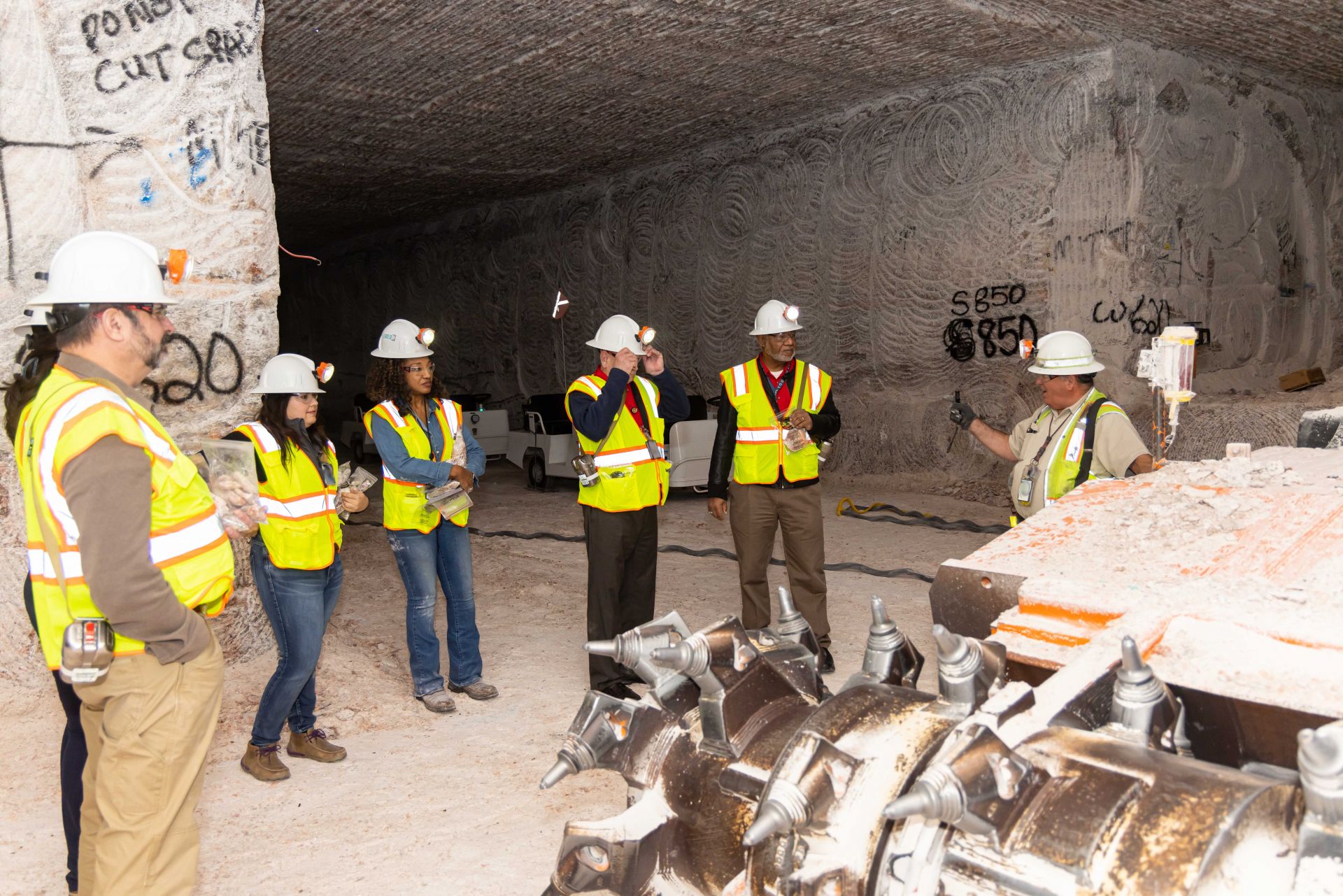Report author Mark Lynas and RePlanet’s Joel Scott-Halkes stand next to a canister of spent nuclear fuel at the Sizewell plant in the United Kingdom. (Photo: RePlanet)
A new report from the environmental advocacy group RePlanet makes the case for recycling used nuclear fuel for use in advanced power reactors. According to the report, What a Waste: How fast-fission power can provide clean energy from nuclear waste, by using current inventories of used fuel and depleted uranium stocks in Europe and the United Kingdom, fast breeder reactors could generate between 600 and 1,000 years of carbon-free electricity for the entire European Union.
William “Ike” White addresses the audience at INTEC, which gathered to celebrate the completion of the spent fuel wet-to-dry project at the INL site. (Photo: DOE)
At Idaho National Laboratory, Department of Energy leaders joined tribal, state, and local officials; contractors; and workers on March 28 to mark a recent milestone with the state of Idaho nearly 25 years in the making. The milestone was the completion of a spent fuel wet-to-dry project more than nine months ahead of a 1995 Idaho Settlement Agreement deadline.
Two British Class 88 locomotives transport a nuclear waste flask wagon across Great Britain. (Photos: NTS)
Since its formation in 2005, the United Kingdom’s Nuclear Decommissioning Authority (NDA) has been tasked with ensuring that the U.K.’s nuclear legacy sites are decommissioned and cleaned up safely, securely, cost-effectively, and in ways that protect the people and the environment.
Panelists speak at the 2023 Waste Management Symposia “Hot Topics” session. (Photo: DOE)
The Department of Energy’s Office of Environmental Management (EM) has made great progress in accomplishing its cleanup of legacy radioactive waste but has yet to tackle its most challenging tasks, including the treatment of liquid tank waste at the Hanford, Idaho, and Savannah River sites. That was the consensus of the DOE-EM officials who took part in a panel session of the 2023 Waste Management Symposia, held February 26–March 2 in Phoenix, Ariz.
A loaded MP197HB cask is prepared for departure from the Vermont Yankee decommissioning site to West Texas. (Photos: Orano TN)
The rapid changes in the nuclear energy industry over the last decade, driven in part by fluctuating energy market prices and an aging fleet of reactors, have led to the closure of multiple reactors in the United States and other countries. These closures have increased the need for larger and more efficient ways to manage low-level radioactive waste processing and transport capacities. The safe transport of radioactive material is a key component of the overall nuclear industry reliability. Though sometimes perceived as a bottleneck and costly, it is necessary to send waste material to disposal.
The Galloway is lowered into the utility shaft at WIPP. (Photo: DOE)
Progress continues on a new utility shaft at the Department of Energy’s Waste Isolation Pilot Plant in New Mexico as shaft-sinking crews recently surpassed the midway point at a depth of 1,076 feet. When complete, the full shaft depth will be 2,275 feet, with the team now halfway to the WIPP repository depth of 2,150 feet.
A rendering of Holtec’s proposed HI-STORE CISF in New Mexico. (Image: Holtec)
New Mexico has passed legislation aimed at preventing Holtec International from constructing and operating a consolidated interim storage facility (CISF) for spent nuclear fuel in the state. On March 17, hours after being passed by the New Mexico House on a 35-28 vote, Democratic Gov. Michelle Lujan Grisham signed SB 53, which prohibits the storage and disposal of radioactive waste in New Mexico without the state’s consent.
The SSSB wet pit, which once held spent naval nuclear fuel, is demolished. (Photo: APTIM)
Nuclear dismantling and decommissioning company APTIM said it is on schedule to wrap up field activities decommissioning the U.S. Navy’s Surface Ship Support Barge (SSSB) by April, with project closure slated for June. The company announced yesterday that its team has completed the demolition of the barge’s former spent fuel water pool, also referred to as the “wet pit,” or the heart of the vessel.
Using GeoMelt ICV technology to treat and immobilize problematic low-level wastes at INL and WCS.
A sample of GeoMelt glass. (Photos: Veolia)
When it comes to managing nuclear waste, technology is transforming the way some of the most problematic waste is handled. The idea to transform nuclear waste into glass was developed back in the 1970s as a way to lock away the waste’s radioactive elements and prevent them from escaping. For more than 40 years, vitrification has been used for the immobilization of high-level radioactive waste in many countries around the world, including the United States.
Southeast New Mexico College staff visit the WIPP site. (Photo: WIPP)
Two Department of Energy sites recently announced training partnerships with local technical and community colleges designed to offer students hands-on work experience while building a workforce pipeline to waste management jobs.
The first silo emptying machine installed in the Magnox Swarf Storage Silo at the U.K. Sellafield site. (Photo: Gov.UK)
The second of three machines that will be used to safely remove waste from the Magnox Swarf Storage Silo at the Sellafield nuclear site in the United Kingdom has successfully been assembled, it was announced by Sellafield Ltd., a subsidiary of the U.K. government’s Nuclear Decommissioning Authority.
A video showing how waste is removed and the Magnox Swarf Storage Silo prepared for decommissioning has been posted to YouTube and can be found here.

















